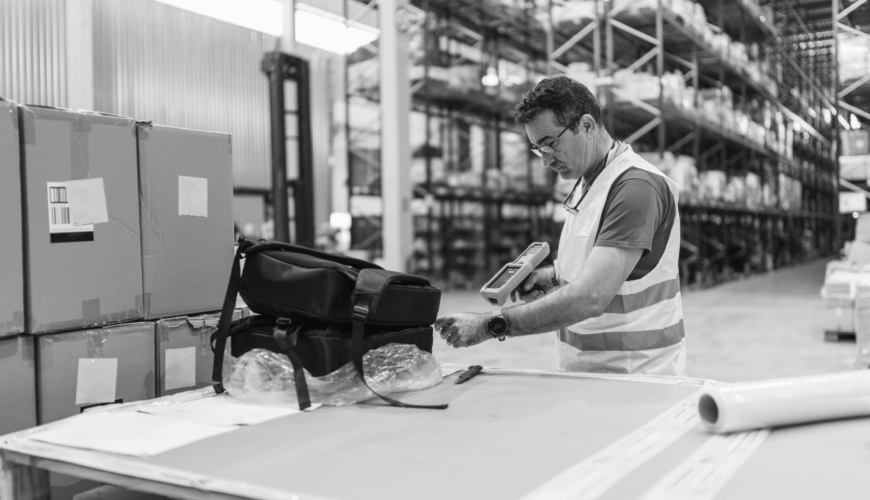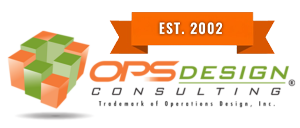In e-commerce fulfillment, the packing station is the final frontier before the order departs from the warehouse. It is the last opportunity to influence order accuracy, presentation, protection, and timeliness. As online order volumes surge and consumer expectations evolve, packing stations must balance speed, precision, ergonomics, scalability, and cost efficiency. This article outlines how to design high-performance packing stations across three levels of sophistication—manual, mechanized, and automated—and explains how each can be aligned with business strategy, order profiles, labor dynamics, and available capital.
The Role of Packing Stations in E-Commerce Fulfillment
Packing is more than stuffing items into a box. It encompasses several critical functions:
- Item consolidation from various pick zones
- Order verification to confirm SKU and quantity accuracy
- Protective packaging such as void fill, cushioning, and sealing
- Labeling and documentation, including shipping labels, invoices, and return instructions
- Presentation and branding, which affect customer satisfaction and brand perception
Poorly designed packing stations create bottlenecks, increase rework, and reduce throughput. Conversely, efficient packing environments contribute directly to lower labor costs, higher order accuracy, and improved customer experience.
Principles of Efficient Packing Station Design
Whether manual or automated, all effective packing stations adhere to a core set of design principles:
Process Flow Alignment
Stations should support a logical left-to-right (or right-to-left) flow based on the handedness of the workforce and ergonomic best practices. Activities should occur in a sequence that eliminates backtracking.
Task Separation and Balance
To avoid congestion and improve throughput, separate value-added from non-value-added tasks (e.g., use a separate workstation for returns processing or product inspections).
Ergonomics and Safety
Packing stations must minimize repetitive motion injuries, awkward reaches, and bending. Adjustability, anti-fatigue flooring, and proper lighting are essential.
Scalability and Modularity
Peak periods and promotional surges demand stations that can be scaled quickly with minimal reconfiguration, including mobile components and modular work surfaces.
Integration of Systems and Tools
Packing stations should enable digital system interaction (e.g., scanning, printing, label application) with minimal handoffs and seamless software integration.
Manual Packing Stations
Definition and Use Case
Manual packing stations rely entirely on human labor for item handling, packaging, and labeling. They are most common in low- to mid-volume operations, startups, or warehouses handling highly variable SKUs and order profiles.
Key Components
- Work surface: Sturdy, adjustable-height tables with a 36–42″ standard width
- Shelving and overhead storage: For labels, documents, tape, and light packaging supplies
- Under-bench storage: For heavier items like cartons, dunnage, and void-fill
- Tape dispenser, scissors, and utility knives
- Scales: Integrated for weight-based rate shopping and carrier compliance
- Label printer: Positioned to reduce twisting or reaching
- Lighting: Overhead LED task lighting for visibility and safety
Layout Tips
- Use a U-shaped station to reduce reach distance for multiple supplies.
- Apply color coding and bin labeling to improve packer speed and reduce errors.
- Position frequently used items in the golden zone (between shoulders and knees).
Advantages
- Low capital cost
- Flexible and reconfigurable
- Suitable for high-mix, low-volume operations
Limitations
- Labor-intensive
- Inconsistent performance across employees
- Limited throughput scalability
Mechanized Packing Stations
Definition and Use Case
Mechanized packing solutions augment human labor with powered or semi-automated tools. They are ideal for mid- to high-volume operations seeking productivity gains without full automation.
Key Enhancements Over Manual
Conveyors:
- Inbound conveyors feed totes or cartons from picking
- Outbound conveyors transport sealed cartons to sortation zones
- Reduces travel time and walking distance for packers
Automated Void-Fill Dispensers:
- Paper or air pillow dispensers mounted overhead or on-demand
- Sensors detect the presence of the box to trigger fill
- Reduces pack time and ensures consistent dunnage usage
Automatic Box Sealers and Tapers
- After packing, boxes are fed into semi-automatic taping machines
- Ensures uniform sealing, reduces wrist strain, and improves output
Integrated Scanning and Weighing Systems
- Scales and dimensioners connected to the WMS auto-verify weight and dimensions for freight rating and accuracy checks
Touchscreen Interfaces
- Mounted tablets or terminals show packing instructions, carrier preferences, and item photos for confirmation
Advantages
- Higher throughput than manual
- Improved accuracy and ergonomics
- Reduced packing material waste due to consistent usage
Limitations
- Moderate capital investment
- Requires system integration and maintenance
- Less flexible for very high SKU variability
Example Workflow
- Totes arrive via conveyor from the pick zone
- Packer scans the order ID, and WMS displays the contents
- Items verified against screen prompts
- Box selected based on dynamic sizing logic
- Void-fill dispensed automatically
- Box sealed via semi-auto taper
- Weighed and labeled via integrated scale/label printer
- Box pushed to the outbound conveyor
Automated Packing Solutions
Definition and Use Case
Automated packing solutions leverage robotics, AI, and machine vision to perform most or all packing steps with minimal human intervention. These systems are suited for high-volume, high-SKU-density operations with consistent product dimensions and significant order velocity.
Common Technologies
Auto-Baggers and Polybaggers
- Ideal for apparel and soft goods
- Automatically opens bags, inserts items, seals, and prints labels
- Often used for single-SKU, single-unit orders
Box-On-Demand (BOD) Systems
- Cut-to-size corrugate boxes built on the fly based on real-time item dimensions
- Reduce void-fill, minimize DIM weight shipping costs
- Often paired with integrated auto-pack and seal equipment
Robotic Packing Arms
- Use machine vision and grippers to pick, position, and pack items
- Deployed in micro-fulfillment and high-density facilities
Automated Label Print-and-Apply Systems
- Use scanners and scales to verify order
- Labels automatically printed and applied to packages
- Often placed at the end of a high-speed conveyor line
Advantages
- Exceptionally high throughput (orders per hour per footprint)
- Reduced labor dependency
- Highly accurate with minimal human error
- Excellent for same-day/next-day SLAs
Limitations
- High capital expenditure
- Requires systems engineering and IT support
- Limited flexibility for unique or variable items
- Longer lead times for deployment and ROI realization
Comparative Analysis: Manual vs. Mechanized vs. Automated
Capital Investment
Manual systems require low investment, mechanized solutions require moderate investment, and automated systems involve high upfront capital.
Throughput Capability
Manual operations process about 30–60 orders per hour per station, mechanized stations handle 80–150, while automated systems can exceed 300 orders per hour.
Flexibility (SKU/Order Variety)
Manual operations are highly flexible, mechanized approaches offer moderate flexibility, and automated systems have low to moderate adaptability.
Labor Requirements
Manual setups are labor-intensive, mechanized solutions reduce labor needs to a moderate level, and automated systems minimize labor demand.
Scalability
Manual processes scale through added labor, mechanized systems scale by adding stations, and automated operations scale through technology.
Ergonomics
Manual ergonomics vary widely, mechanized setups generally provide good ergonomics, and automated systems deliver excellent ergonomics with minimal touches.
Use Case Suitability
Manual is best for startups or niche brands, mechanized fits growth‑stage retailers, and automated is ideal for large-scale e-commerce.
Strategic Considerations in Packing Station Selection
Order Profile
- Single-SKU, single-unit orders (e.g., fashion, cosmetics): well-suited for automation or auto-baggers
- Multi-line, multi-unit orders (e.g., hard goods, kits): favor mechanized or manual processes
- High customization (e.g., gift messages, inserts): best handled manually or via assisted packing
SKU Characteristics
- Uniform and barcoded items simplify automation
- Bulky, fragile, or irregular SKUs may require manual handling
Volume and Growth Trajectory
- Static volumes: mechanized stations offer balanced ROI
- Rapidly scaling volumes: design modular automation with expansion capacity
Labor Availability
- In regions with labor scarcity or high turnover, automation may be necessary despite the cost.
- In labor-rich environments, manual solutions may remain viable with incentives and retention programs
Designing for Lean and Flow
All packing environments, regardless of sophistication, should embrace lean principles:
Minimize Touches
- Reduce repacking, relabeling, and redundant scanning
Eliminate Motion Waste
- Keep all tools and supplies within easy reach
- Use roller conveyors or carts to move finished cartons
Standardize Work
- Create SOPs with visual diagrams
- Train all staff to follow a common process to reduce variation
Balance Workload
- Use historical order data to match staff to expected volumes
- Reallocate resources to picking or other departments during slow packing periods
Technology Integration: Connecting Packing to the Digital Thread
WMS Integration
- Packing stations should interface directly with the warehouse management system to pull packing instructions, verify orders, and record pack data
- Integrate real-time inventory deduction at the point of pack
Carrier Rate Shopping and Compliance
- Connect to rate engines for lowest-cost carrier selection based on weight/dims
- Auto-validate against carrier size and weight constraints
- Trigger exception workflows for oversized items
Return Enablement
- Automatically print return instructions or labels
- Include custom return messaging based on order history or product category
Continuous Improvement and Performance Management
A packing station is not static. As products, order profiles, and customer expectations evolve, the station must adapt.
Metrics to Monitor
- Orders packed per hour
- Packing errors or damage rates
- Labor hours per 100 orders
- Void fill usage per order
- Station uptime vs. downtime
Auditing and Feedback Loops
- Conduct monthly 5S audits
- Use employee suggestions to iterate workstation layout
- Implement Kaizen events quarterly to eliminate bottlenecks
Case Example: A Tiered Approach
A mid-size e-commerce apparel brand processes 8,000 orders per day during peak. Their packing strategy:
- Manual stations for custom orders and returns
- Mechanized lines with conveyor, box tapers, and overhead void-fill for core SKUs
- Auto-baggers for single-unit T-shirt orders
- Modular setup allows 50% expansion during Q4 without new capital
This hybrid model leverages the strengths of each packing tier for different order types, maximizing flexibility, throughput, and ROI.
Final Thoughts: Designing for Today, Preparing for Tomorrow
Packing stations are more than tables and tape; they are the nerve center of order completion. A well-designed station can drive productivity, reduce waste, and elevate customer satisfaction.
- Manual solutions offer unmatched agility for complex and varied orders.
- Mechanized environments deliver efficiency and balance at scale.
- Automation drives consistency, speed, and long-term labor independence.
The best packing strategy is rarely one-size-fits-all. It should evolve with operational maturity, business goals, and customer demands. By combining thoughtful design, lean principles, and the right level of mechanization or automation, fulfillment operations can build packing environments that are not only efficient, but resilient and future ready.


